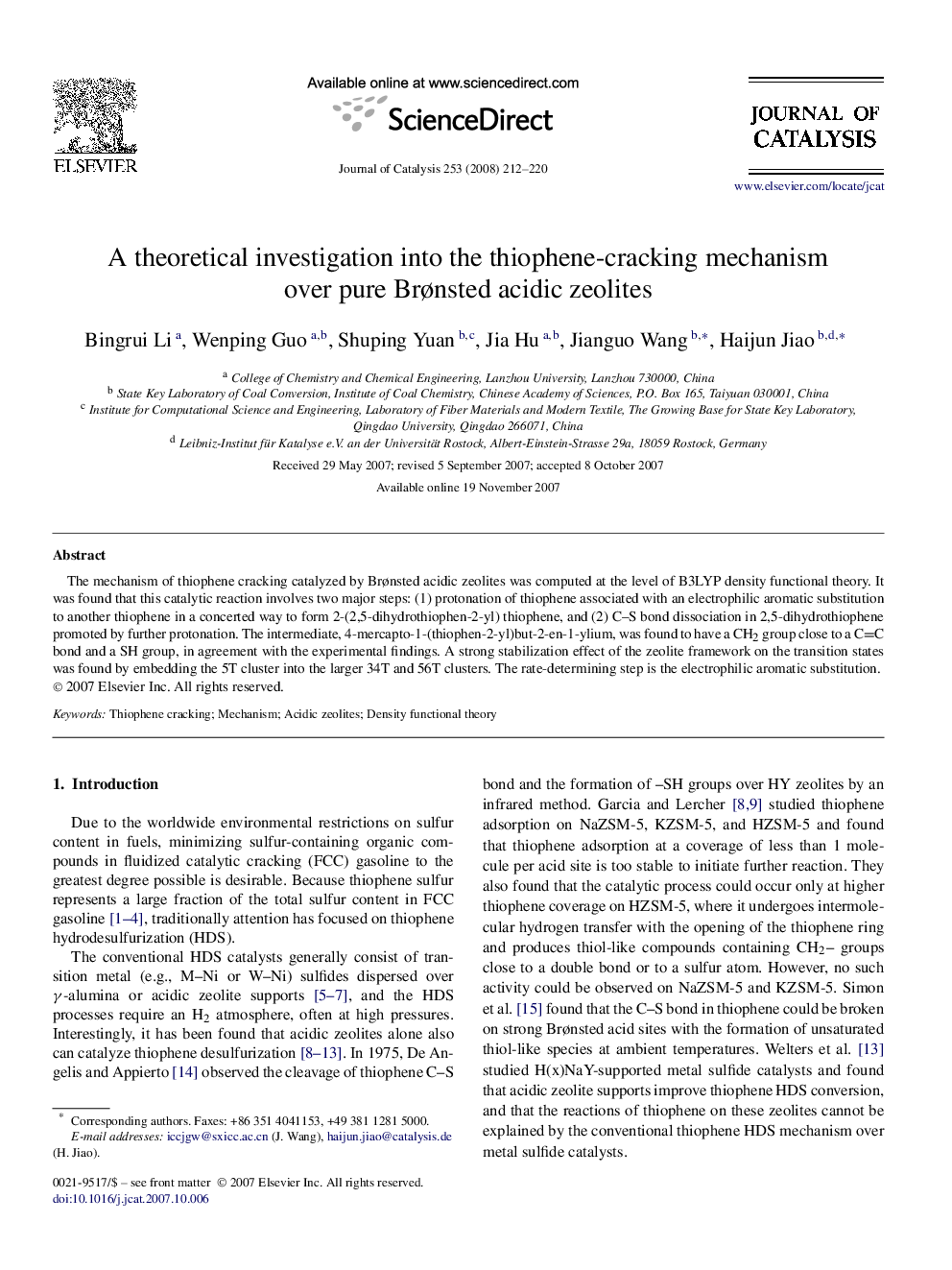| Article ID | Journal | Published Year | Pages | File Type |
|---|---|---|---|---|
| 62550 | Journal of Catalysis | 2008 | 9 Pages |
The mechanism of thiophene cracking catalyzed by Brønsted acidic zeolites was computed at the level of B3LYP density functional theory. It was found that this catalytic reaction involves two major steps: (1) protonation of thiophene associated with an electrophilic aromatic substitution to another thiophene in a concerted way to form 2-(2,5-dihydrothiophen-2-yl) thiophene, and (2) CS bond dissociation in 2,5-dihydrothiophene promoted by further protonation. The intermediate, 4-mercapto-1-(thiophen-2-yl)but-2-en-1-ylium, was found to have a CH2 group close to a CC bond and a SH group, in agreement with the experimental findings. A strong stabilization effect of the zeolite framework on the transition states was found by embedding the 5T cluster into the larger 34T and 56T clusters. The rate-determining step is the electrophilic aromatic substitution.
